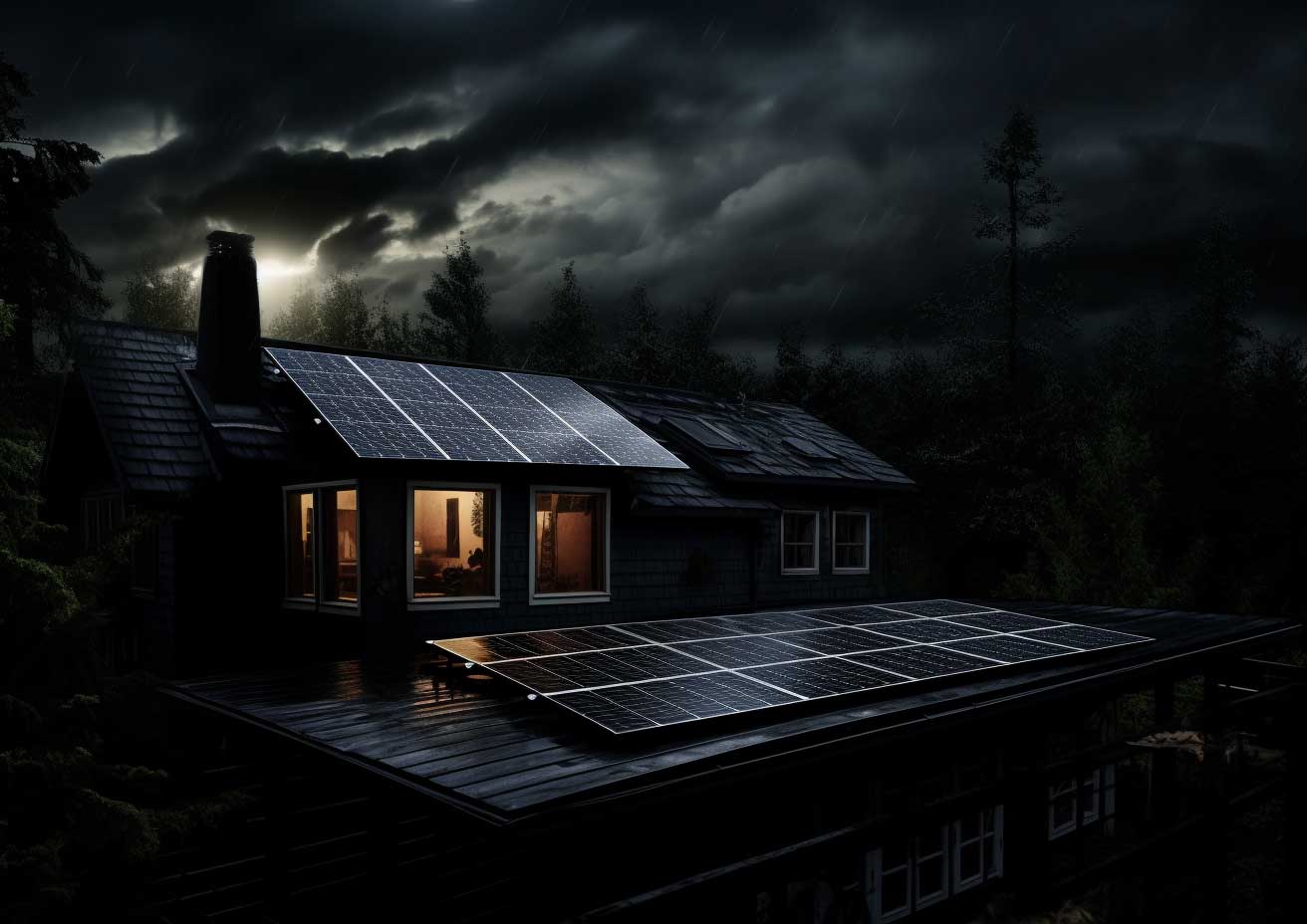In the era of technological revolution and climate awareness, electric vehicles have emerged as a beacon of hope, promising a sustainable solution to our transportation needs. And when we speak of electric vehicles, we speak of Tesla: a name synonymous with breathtaking innovation and relentless aspiration.
Offering not just a clean energy alternative but also promising an experience that is all about performance, comfort, and elegance, Tesla runs on the power of electricity, bypassing the conventional need for fossil fuels. However, generating that electricity doesn’t have to be a conventional process either.
A solar panel silently drinking in the sunshine on your roof. A powerhouse like the Tesla Powerwall stores energy for use around the clock. Your beloved Tesla Model is plugged in, refueling for the next journey, all from this beautifully clean, renewable energy source known as solar power. Whether we call ourselves environmentalists, tech enthusiasts, or simply mindful consumers, we might all wonder at some point: “How many solar panels do I need to charge a Tesla?”
The intersection of solar energy and electric vehicles presents an intriguing question that boasts environmental, economic, and lifestyle implications. Today, we dive into the numbers, the logistics, and the benefits of using solar panels to charge your Tesla, giving you the facts you need to make informed decisions about your sustainable journey.
The Concept of Solar Energy and Electric Vehicles
When we turn our gaze upward towards the vast expanse of the sky, we see the sun – our planet’s original (and biggest) power station. This power station radiates an astronomical amount of energy every second, part of which reaches Earth and propels all life forms.
Solar panels work by converting this solar energy into usable electricity, facilitating the operation of numerous applications and devices that normally run on grid electricity. Solar panels, along with components like the solar inverter, solar cells, and solar panels, are at the core of this conversion process, transforming sunlight into a power source that can charge anything – even a Tesla electric vehicle.
On the other side of our discussion are electric vehicles, a fast-evolving breed of automobiles that offer us a chance to redefine our relationship with transportation and energy. Standing steadfast at the forefront of this revolution is Tesla, a name that echoes innovation, speed, and sustainability. Electric vehicles, specifically Tesla models, run on batteries similar to those in your everyday gadgets, only on a much larger scale. Batteries like the Tesla battery store energy that powers the vehicle, replacing the need for gasoline or diesel – the main culprits behind greenhouse emissions in the transport sector.
Solar Panels and Solar Installation for Tesla Charging
The creation of solar electricity is a team effort, beginning with the solar panel team. A solar panel system involves an array of panels working cohesively. These panels contain solar cells which are responsible for capturing and converting sunlight into electricity. This electricity is then used to power various needs, from home appliances to electric cars like Tesla.
Relationship Between Solar Panels and a Tesla Model
Different factors come into play when determining the number of solar panels required to charge a Tesla. These factors can include the model of the Tesla, with each varying in battery capacity and power usage. A Tesla Model S, for instance, may require a different number than a Model 3. Other variables to consider are a panel’s efficiency and the average hours of sunlight in your region.
The Role of Solar Panel Efficiency
Solar panels come in various shapes, sizes, and more importantly, efficiencies. Not all panels are created equal: some can capture and convert more sunlight into electricity than others. Higher-efficiency panels may cost more but might also save space because fewer will be required. It’s a game of balance between space, budget, and energy needs.
Influence of Location and Sunlight Hours
Location is also crucial. Solar panels require sunlight, and the amount of sunlight your home receives directly impacts the amount of electricity your solar panel system can generate. More sunlit hours equate to more solar generation and potentially less number of panels required.
Components of a Solar Charging System for Tesla
Detailing Tesla’s Solar Panels
Tesla solar panels are one of the primary components of a Tesla-owned solar charging system. Equipped with efficient solar cells, these panels are designed to capture sunlight and convert solar energy into electricity effectively. They are robust, long-lasting, and scalable, serving as the primary source of power for your greener and more sustainable vehicle charging experience.
Energy Storage: Tesla Powerwall
The Tesla Powerwall plays an essential role in a solar charging system. It acts as the energy storage unit in a home solar system, storing excess solar energy generated during the day. Having a solar battery like the Powerwall maximizes one’s ability to use solar generation since it ensures energy availability even during the night hours or during instances where sunlight is deficient.
Portable Solar Panels: Backup and Mobile Charging
Next in line are the portable solar panels. While they don’t replace the purpose of permanent solar installations, they provide a secondary source of solar power. Ideal for outdoor trips or emergencies, these portable units offer added convenience and can contribute towards a minor top-up for your Tesla battery.
The Solar Inverter’s Role
The solar inverter in your system is a hero behind the scenes. The DC electricity created by the solar panels is not immediately usable by household appliances and electric cars. The inverter’s task is to convert this DC electricity into AC electricity, making it suitable for typical home and vehicle use.
The Solar Roof: Reimagining Energy Capture
For those looking for a significant aesthetic upgrade that also serves a functional purpose, Tesla offers a solar roof. This product replaces traditional roof tiles with solar tiles that can generate solar electricity. Designed to seamlessly integrate with the Tesla Powerwall, the solar roof turns sunlight into electricity while maintaining the aesthetic integrity of your home.
How Many Solar Panels to Charge a Tesla?
The answer to this question requires gathering some simple information. Since not all regions or Teslas are the same, this answer will depend on several factors:
- The battery size of your Tesla
- How much you drive
- The efficiency of your solar panels
- Where your home is located
The battery size of your Tesla will determine how much kilowatt-hours (kWh) of energy you use each time you drive. Here is a chart of battery sizes for the most recent Tesla models:
TESLA BATTERY SIZES
| TESLA MODEL | BATTERY SIZE |
| Tesla Model S | 100 kWh |
| Tesla Model S Plaid (19-inch wheels) | 100 kWh |
| Tesla Model S Plaid (21-inch wheels) | 100 kWh |
| Tesla Model 3 RWD | 50 kWh |
| Tesla Model 3 Long Range AWD | 82 kWh |
| Tesla Model 3 Performance AWD | 82 kWh |
| Tesla Model X | 100 kWh |
| Tesla Model X Plaid (20-inch wheels) | 100 kWh |
| Tesla Model X Plaid (22-inch wheels) | 100 kWh |
| Tesla Model Y RWD | 81 kWh |
| Tesla Model Y AWD | 81 kWh |
| Tesla Model Y Long Range AWD | 81 kWh |
| Tesla Model Y Performance AWD | 81 kWh |
Then, figure out how many miles you drive. According to the Federal Highway Administration (FHA), the average driver travels 14,263 miles per year, which is about 1,189 per month, or about 39.11 per day.
Next, figure out the range of your Tesla. Again, we provide a chart here of the most current 2022 models to make it easier for you.
TESLA RANGES
| TESLA MODEL | RANGE |
| Tesla Model S | 405 miles |
| Tesla Model S Plaid (19-inch wheels) | 396 miles |
| Tesla Model S Plaid (21-inch wheels) | 396 miles |
| Tesla Model 3 RWD | 305 miles |
| Tesla Model 3 Long Range AWD | 374 miles |
| Tesla Model 3 Performance AWD | 340 miles |
| Tesla Model X | 348 miles |
| Tesla Model X Plaid (20-inch wheels) | 333 miles |
| Tesla Model X Plaid (22-inch wheels) | 333 miles |
| Tesla Model Y RWD | 283 miles |
| Tesla Model Y AWD | 283 miles |
| Tesla Model Y Long Range AWD | 330 miles |
| Tesla Model Y Performance AWD | 319 miles |
Simplified Calculation for Solar Panels Needed to Charge a Tesla
When thinking about solar panels, it’s crucial to understand their efficiency. Household solar panels usually have a power rating between 250 and 400 watts. In simple terms, this means your panels could generate about .25 kW – 0.40 kW worth of electricity every hour.
Let’s simplify this using the Tesla Model S as an example. This car possesses a 100 kWh battery and boasts a range of 405 miles. If we’re looking at a travel distance of 39.11 miles, this equates to approximately 9.66% of the vehicle’s full range (since 39.11 is roughly 9.66% of 405). Thus, to cover this distance, we would be using about 9.66% of the car’s battery. By this calculation, we’d need to generate around 9.66 kWh of energy using our solar panels to replenish this used power.
To bring everyone on the same page, 20 kWh equals 20,000 watts.
Next, we need to consider the sunshine that your location receives. Some places, like Arizona, enjoy more sunshine than others like Washington. This sunshine information is crucial because solar panels generate power using sunlight. You can check your area’s daily sunlight hours using resources like the U.S. Annual Solar Global Horizon Irradiance map provided by the National Renewable Energy Laboratory.
Imagine you live in sunny Southern Arizona, where you can expect about 5.75 hours of bright sunshine each day. Now, if we divide our daily energy requirement of 20,000 watts by these sunlight hours, we find:
20,000 watts/ 5.75 sunlight hours = around 3,478 watts of solar power needed daily.
Lastly, to find out the number of solar panels required for your Tesla, you have to divide the total solar energy requirement by the rated power output of the solar panels you plan to install. So if we use solar panels with an efficiency of 300 watts, we see:
3,478 watts energy requirement/300 watts per panel = about 12 solar panels.
Remember, this is simply an example and the specific numbers for your situation may differ based on multiple factors, including your Tesla model, daily mileage, and solar panel efficiency.
Transition from Grid Electricity to Solar Electricity
Solar electricity offers an alternative route, one that sidesteps the harmful side effects of traditional electricity generation. Solar panels soak up the sun’s rays in the day and convert the energy into electricity. This electricity can be used immediately or stored in a battery like the Tesla Powerwall for later use. The shift from grid electricity to solar electricity isn’t just a change in power source but a significant stride towards achieving a more sustainable lifestyle.
On the face of it, grid electricity might seem less expensive. After all, mounting a solar panel system involves some initial expenses. However, a closer look reveals a different story. The cost of solar equipment has been decreasing over the years, while the cost of fossil fuel-based electrical power has shown an upward trend. Plus, once a solar system is up and running, it can generate electricity at virtually no cost for many years, offering potential savings.
Another important aspect to consider is dependency. With a grid system, you rely on the power company for your electricity needs. Transitioning to solar power means you’re generating your own electricity, reducing your dependency on the grid. This can be particularly beneficial in times of power outages or for those living in remote areas with unreliable grid services.
Thinking About Having Your Solar Panel Installed?
Harnessing solar power to charge your Tesla and power your home makes sense on multiple levels. Could there be a better testament to sustainable living than popularizing a technology that is both economically viable and environmentally friendly? The answer lies in every ray of sunlight that touches your solar panel.
Yet, we understand that this transition may seem overwhelming or fraught with uncertainties – after all, it’s not every day we make decisions about altering our energy sources. This is where we step in. At WattLogic, we’re committed to empowering you in your journey towards sustainable energy use. We offer expert guidance, practical solutions, and unwavering support every step of the way, taking the guesswork out of your shift to solar.
We believe in the power of informed decisions, and we pledge to arm you with the knowledge you need to make the best choices when it comes to your energy needs. Remember, every solar panel installed, every Tesla charged using solar energy, brings us one step closer to a cleaner, more sustainable world.
Are you ready to take this step toward a sunnier future? Contact us at WattLogic – let us help illuminate your path towards solar-powered living.




